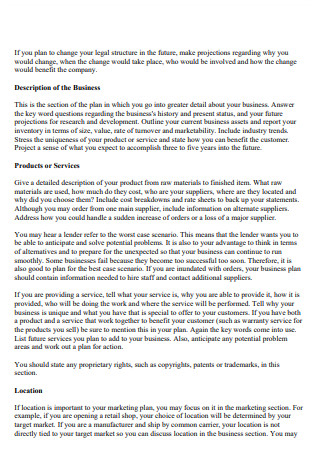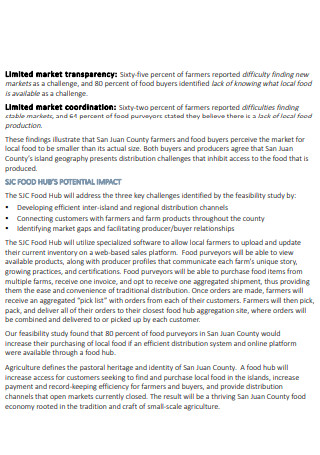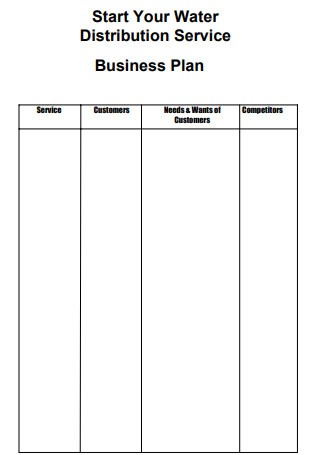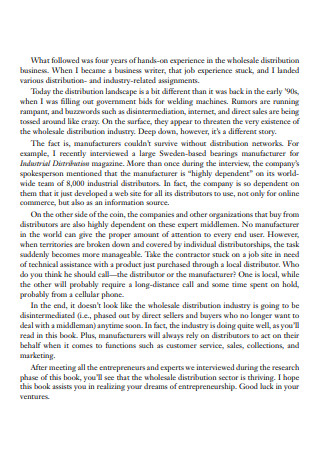Sir Richard Branson said: “Branding demands commitment: commitment to continual reinvention, striking chords with people to stir their emotions, and commitment to imagination. It is easy to be cynical…
continue reading
3+ SAMPLE Distribution Business Plan
What IS a Distribution Business Plan?
A Distribution business plan lays out the groundwork for how a manufacturing company delivers its goods, products, or services to its customers. More than just a method of delivering to end customers, how successful a company’s sales and brand marketing strategy is depends upon how the company makes its product and services more visible and accessible to the market, and that is the important role of an effective distribution business plan plays. A company’s sales revenue is dependent upon the volume or quantity of products being sold, and the availability, timeliness, and efficiency of the products to be sold are all dependent upon the distribution team. The efficiency and timeliness of distributing involves controlling and monitoring, or doing an inventory, of the stocks on hand, and estimating how much is needed to fit in the market’s demand for stocks availability. The distribution business plan utilizes strategic action steps to provide business solutions in terms of product stock availability and to also help achieve the business objectives and goals in a given period.
4 Types of Distribution Strategies
The method of product distribution typically depends on the type of product being delivered, or on the requirements specified by the customer. As times change, so does the demand and need for innovative distribution methods changes to keep up with the constantly changing market needs. Hence, the need for new ways of distributing need to be put into practice. Nevertheless, the old ways of sending off products are still largely being used, but then again this would also depend on the route and channel on which the distributing process takes place. Here are the top four distribution strategies being commonly practiced in the market.
How To Make an Effective Distribution Business Plan
Distribution is an important part of any kind of business, so as having a business plan. A distribution business plan is a vision roadmap that guides you on how to successfully run a distribution business. Whether it’s a distribution for products and goods, or distribution for services, having the right kind of distribution plan could be a make or break for a manufacturer’s success in the market. The type of distribution method typically depends on the product’s and the end customer’s requirements. These requirements could vary, from the type of delivery or shipment process for the products, the type of storage required, and even the accessibility of the end-customer, or how the products will be delivered or shipped to the end-customer. These are all considered when creating a distribution business plan. A distribution business plan document is also used as a report presented to attract potential investors or to avail funding from financial lending institutions. There are no strict formats for creating one since a business plan should be flexible enough to fit the needs of the manufacturer. When creating a distribution business plan, the following essential elements should at least be included in the planning process.
-
1. Executive Summary
An executive summary in a distribution business plan outlines the goals and objectives of the company or manufacturer. It provides a brief overview of what the company does, as well as a summary of what are the action steps to be taken to achieve the goals and objectives. Writing the executive summary should be similar to if you’re making a sales pitch. You would want to capture the interest of your audience, to make them interested enough to go through the whole business plan itself. Executive summaries oftentimes consist of a mission and vision statement. A mission statement states the purpose for creating the distribution plan. The mission statement also reflects the culture and values of a manufacturing company. Sysco, one of the leading global distributors of food products, has a good example of a mission statement. Its simple, yet effective, mission statement goes, “To market and deliver great products to our customers with exceptional service.” The vision statement describes what the manufacturing company hopes to achieve, usually in a given time frame. The vision statement serves as a call to action, a motivation for both the company and the employees to work together to accomplish their goals and objectives.
-
2. Products and Services
This is where the meat of your business plan centers on. Essentially, being in a distributor trade means being the middle entity between the manufacturing company and the end-customer, which is usually the retail stores or the wholesalers. Hence, the products come from the manufacturing company, go to the distributors, then go to the end customers. Not unless a manufacturing company has its distribution channels and teams, a stand-alone distribution company typically offers just the service side in a business plan, which is the shipping, delivery, releasing, and necessary storage of the products. A stand-alone distributor can have some value-added services as well, aside from distributing products. An example of a value-added service could be in the form of promos, discounts, packages. It could also be that the distributor provides the fastest and safest delivery among all other distributors. Another service a distributor could offer is having the right vehicles to store and deliver the products. If the distributor is part of the manufacturing company’s group, the service of the distributor is tied up along the company’s goals and objectives in the sense that the company’s sales revenue would depend on how reliable the distribution team is in making an inventory and delivering products to their stores.
-
3. Market Analysis
A market analysis is studying the market’s condition on how ready the current market is for the distribution business. Aside from studying if there is a niche in the market, existing distributor competitors are also being considered. Doing a SWOT analysis is one way of studying the business’s readiness to enter the market. SWOT is the Strengths, Weaknesses, Opportunities, and Threats aspects of the manufacturing business. Strengths are those features of the distributor that makes it stand out from its competition. Weaknesses are those aspects that needed improvement or lacking in support or resources to fully maximize the operation of the distribution business. Opportunities are aspects that the business could leverage to benefit the business and help the business achieve its goals. Threats are those aspects that could potentially harm or put at risk the operation of the distribution business.
-
4. Market Strategy
No business could survive without having an effective marketing strategy. B2b Marketing strategy is all about positioning the business in the current market, attracting potential customers, increasing brand strategic plan awareness and recognition, and eventually turning potential customers into actual buying customers. Direct, indirect, inclusive, and exclusive distribution strategies, as described above, are examples of distribution marketing strategies. Another example of distribution marketing strategy is creating an online presence via website creation, and/or being active in social media and social networking platforms. But it does not only ends at creating a website or creating a profile account on Facebook, Instagram, Twitter, et cetera. The distributor needs to be active online as well, especially when answering questions and concerns regarding the products they’re distributing. Doing search engine optimization (SEO) marketing is also another strategy. SEO marketing strategy helps ensure that the distributing company stays on top of every keyword search relating to the products or the distributing business over the internet.
-
5. Financial Plan
The financial planning section is also another important part of a business plan. It mainly describes the financial condition of the distribution company. It shows the capital of the business, its estimated costs and expenses, and its targeted revenue based on the given marketing strategies. The section is especially important to the investors or the financial lending institutions since it would tell them how feasible and measurable the distribution business plans are. Often included in a financial plan are the cash flow statement and the balance sheet. A cash flow statement states the ins and outs of the budget versus the expenses, that would be the start-up capital less the costs or expenses to run the distribution business. The balance sheet shows the company’s assets, liabilities, as well as shareholders’ equities as applicable.
FAQs
How significant is the role of distribution to a business?
Distribution plays an important role in any kind of business. It ensures a smooth flowing transaction between the manufacturer and the end-customer or user. Their role is to mainly make sure that the products and goods are immediately available upon customers’ demand, make sure that there is sufficient supply strategically placed in the market, and also make sure the safety and security of the products and goods especially when these are en route for release or delivery.
How different is a wholesaler from a distributor?
A distributor acts as an intermediary between the manufacturing company and the stores that will be interacting and selling the products to the customers. Distributors work directly with the manufacturer, while wholesalers purchase large volumes or quantities of products and goods from the distributors, before selling them off to either retail stores or individual customers.
How different is a wholesaler from a retailer?
A wholesaler typically buys products in bulk, usually at a lower price, from distributors, repacks them, and sells them off to the next group, which is usually the retail stores. Retailers sell the products in smaller quantities to end-users. In the distribution business, retailers are considered as the end-customer since the sales target ends when the retailer pays for the products to the distributors.
A food service distribution business is considered to be one of the lucrative types of distribution trade. Not only do they provide the fresh produce, ingredients, fresh meats, and so on, they also provide the equipment and tools needed in restaurants, fast foods, hotels, catering businesses, and other sorts of food businesses. Despite being the middle entity between the food processing and manufacturing industry, they have an important role to play in ensuring the smooth flow of the delivery and release of ingredients and resources needed to make these other food businesses’ operations run smoothly as well.
Need help in creating a distribution business plan? Check out our distribution business plan templates, and see how easy and convenient it is to start your journey towards a successful distribution business!





